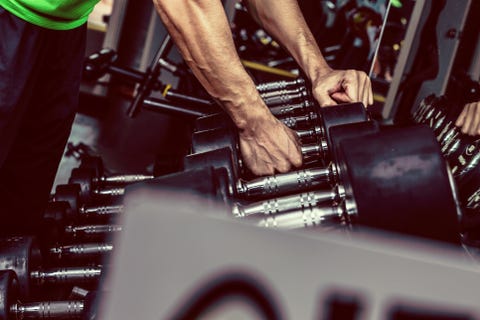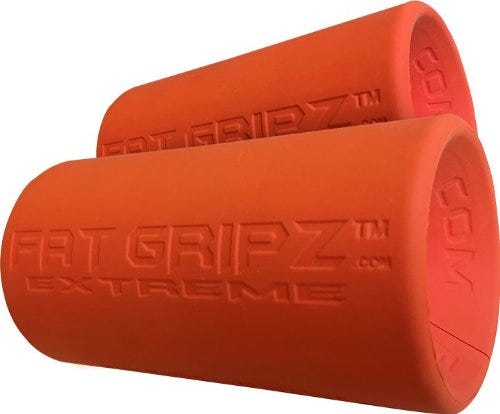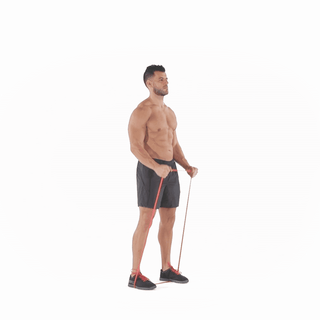
At the end of every arm day, if you hear a little voice whispering in the back of your head to rep through just one more round of curls to make that bicep pop, you’re not alone.
Your arm muscles might not be so receptive to all that extra work you’re putting in — but all hope of bicep gains is not lost.
With the right tweaks to your training plan and some work, you can add sizable girth to your guns you could only have dreamed of using an old, stale routine. Start by correcting these four common mistakes, and you’ll be on your way to bigger, better biceps.
Don’t Ignore The Brachialis
Your bicep is comprised of two heads — hence the “bi” in the name — the long head and short head. But there’s also an elbow-flexing muscle called the brachialis, which shouldn’t be forgotten in your training plan if pumping up your biceps is the goal.
That starts with exercises using a hammer grip, but to truly isolate the brachialis, focus less on the weight being moved and more on using constant tension. This means bringing the weight down fairly slowly, squeezing your muscles during every bit of the rep, and not locking out or “pausing” when the tension is off the muscle.
Try this unique spin on the conventional hammer curl as one way to isolate this muscle:
Put one knee up on the seat (the opposite side of the arm you’re going to be curling with) and put your elbow in a fixed position on the preacher’s bench. Slowly lower the weight until you reach full extension. Curl it back up with control.
This single-arm variation of a classic exercise locks your elbow in a fixed position and helps you achieve a full range of motion. The reps are harder than they look, and you should feel a great stretch in your biceps and forearms if you are doing them correctly.
Don’t Neglect Your Grip Strength

Getty Imagesgraphixel
Do you remember that hand-held grip thingy your dad had? Maybe it’s time for a comeback.

According to one recent study, grip strength is on the decline. Researchers recently tested 237 men aged 20 to 34 and found they had significantly weaker hand grips compared to young people tested in 1985.
Grip strength isn’t just important for your handshakes and heavy lifts, either. The measure is also tied to longevity, as a team of University of Michigan researchers found that people with lower levels of grip strength are 50 percent more likely to die earlier than individuals who were stronger than a baseline test.
So, aside from a steady diet of deadlifts and forearm exercises, how can you work on grip strength? Try these moves to start — or use one of these fat grip add-ons for your curls to build up your biceps in the process.
Don’t Lift Heavier Than You Can Handle
How often do you see dudes heaving around 55-pound dumbbells for an ugly set of “full-body” curls? You need to be able to check your ego at the door. Don’t lift to impress anyone who isn’t watching you anyway.
Drop the weight down to something you know you can curl effectively to start, and really focus on the eccentric (lowering) portion of the movement. Aim for a three-count while you lower the weight on each rep.
Try these incline dumbbell curls, using an angled bench to increase the stretch on the long head of the biceps. The more horizontal the bench, the more the long head of your biceps will be stretched throughout the movement.
Don’t Be Too Boring
If the bulk of your arm training involves a lazy set of alternating dumbbell curls on the tail-end of your back training day, it’s time to step it up and get freaky with it.
Try changing the angle, switching between supinated and hammer grips, and vary your rep ranges from one workout to the next.


Men’s Health
For one exercise, add a mini band to conventional barbell curls. Loop the band under both feet and hold it in your palms, facing up, like the GIF above. Grip the bar with the band sandwiched between your hands and the bar curl away.
Bands allow for accommodating resistance through the entire range of motion, matching your strength curve. In other words, the bands are most resistant when you’re at your strongest (i.e. band is fully lengthened and most resistant at the peak of a barbell curl when usually the tension is off), challenging you equally throughout the entire range of motion.
Next up, try intensity techniques such as drop sets and partial reps.
For drop sets, rep out a target amount of reps and then, upon failure, drop down in weight and rep out another set, then repeat the cycle again.
For partial reps, perform smaller, half reps from multiple positions. The technique will prolong the time under tension and promote muscle growth. These should still be done in a controlled manner and certain exercises — Olympic lifts like the clean-and-jerk and snatch — aren’t very well suited to them. Keep your reps light to start, and watch those biceps swell.
Source: Read Full Article
